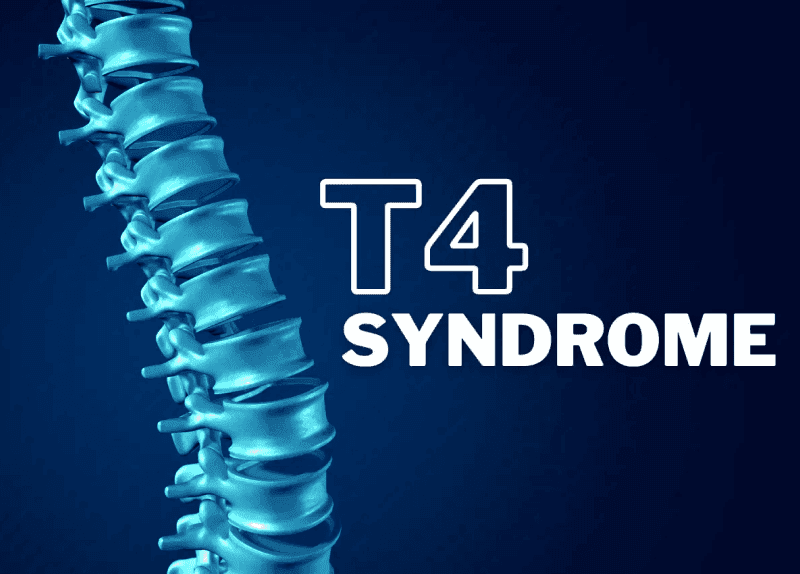
T4 Syndrome Case Study (Abstract)
Written By: Philip Librone, B.A., D.C.1 & Ella Kalantarov, B.A., D.C.2
The T4 syndrome was introduced in the chiropractic literature in 1957 by Maitland and Burnell. Any thoracic segment from T2 to T7 may be involved; however, T4 is most commonly affected; hence “T4 syndrome.” It may also be referred to as the “upper thoracic syndrome.” The mechanism of the condition is unknown but it is hypothesized that symptoms are of sympathetic origin. Symptoms coming from the sympathetic nervous system provide a pathway for the expression of the T4 syndrome. The pain referral is from a proximal structure, thoracic spine, supplying innervation at one level to peripheral structures, head and upper extremities, supplied at the same level via the vascular system. Studies have identified a relationship between chiropractic thoracic adjustments and sympathetic flow. Symptoms of T4 syndrome are widespread and may involve the neck, head, and upper extremity either unilaterally or bilaterally (Figure 1 in Case Study).
Objective: The purpose of this case study was to describe a patient who presented with symptoms that closely resembled the T4 syndrome and to raise awareness in clinical practices.
Clinical Features: The patient typically presents with upper thoracic pain, bilateral paresthesia and numbness in the hands with no neurological signs present. The cause appears to be from upper thoracic segmental joint dysfunction referring symptoms to the upper limbs. Onset is insidious with no identifiable precipitating event. Characteristic symptoms of pain and/or paresthesia in a glove-like distribution of the hands can lead to misdiagnosis; therefore, a thorough exam must be performed.
Intervention and Outcomes: Chiropractic adjustments to reduce subluxation consisted of a high velocity, low-amplitude thrust delivered by hand, accompanied by therapeutic modalities and muscle exercises. By the fifth visit, the patient reported complete remission of thoracic pain and hand numbness.
Conclusion: The T4 Syndrome is comprised of unilateral or bilateral upper extremity pain and paresthesia that originates from the upper thoracic spine. There are no neurological or vascular changes in the classic T4 syndrome upon examination. Case of a sixty-four-year-old female demonstrated resolution of upper thoracic pain and hand numbness and paresthesia in a case of T4 syndrome through chiropractic care.